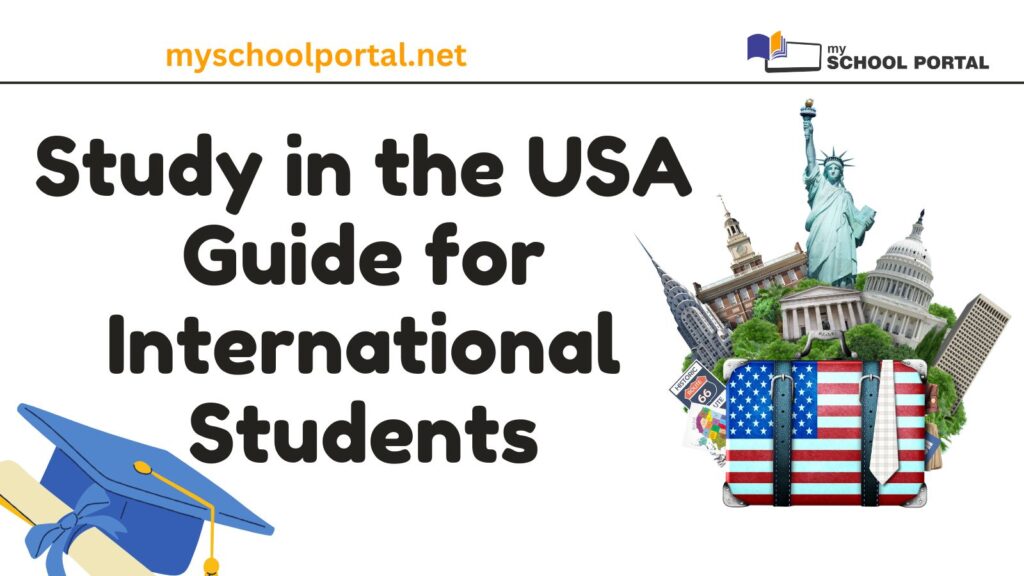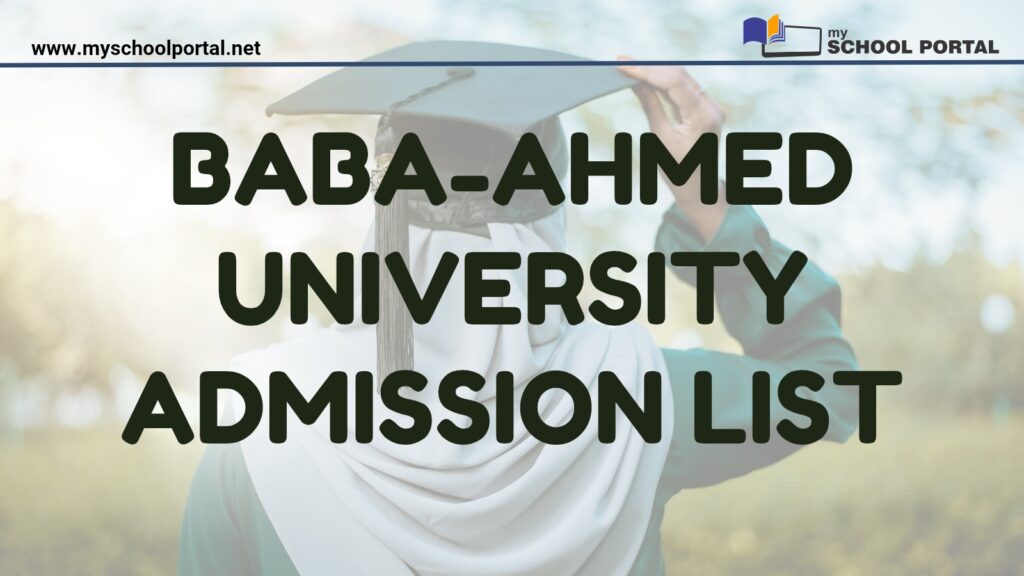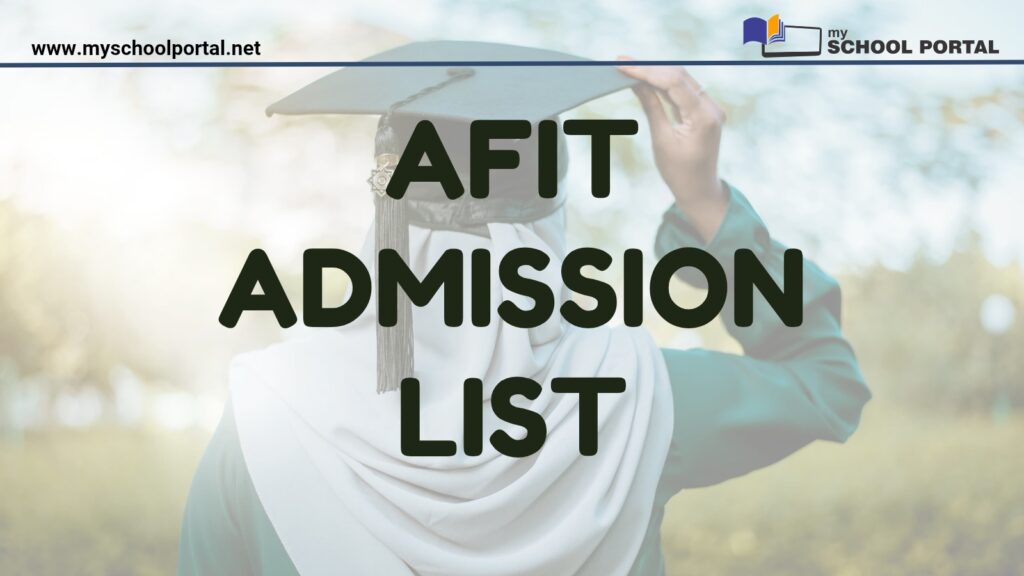The United States has long been a premier destination for international students, drawing learners from every corner of the globe. Renowned for its top-tier education system, the USA boasts a variety of institutions offering cutting-edge programs in nearly every field of study. From Ivy League universities to state-of-the-art research institutions, the USA combines academic rigor with opportunities for personal and professional growth.
Studying in the USA goes beyond the classroom, offering students a chance to immerse themselves in a rich cultural landscape and build lasting connections. The country’s emphasis on innovation, critical thinking, and global awareness equips students with the skills needed to succeed in a competitive job market.
Growth of International Student Enrollment
With over 1,000,000 international students enrolled annually, the USA is home to the largest population of international learners worldwide. Approximately 5% of all higher education students in the USA are international, and this number continues to grow as students seek quality education and global exposure. Starting with just 35,000 international enrollees in the 1950s, the US education system has seen exponential growth in its global appeal.
Institutions across the country have adapted to meet the needs of this diverse demographic, offering tailored support services, scholarships, and programs designed for international success. Whether you’re pursuing an undergraduate degree, a master’s program, or a research-focused doctorate, the USA remains an unparalleled choice.
Why Choose the USA for Your Studies?
Academic Excellence and Global Recognition
The USA is synonymous with academic excellence, hosting seven of the world’s top 10 universities, according to global rankings. Degrees from American institutions are highly valued internationally, opening doors to careers and advanced studies across the globe. The country’s commitment to fostering innovation ensures that students receive a forward-thinking education that adapts to industry trends.
Cultural Diversity and International Networks
One of the USA’s most attractive features is its cultural diversity. Campuses across the nation bring together students from varying backgrounds, fostering a truly global environment. This diversity allows international students to build networks that span continents, offering lifelong professional and personal benefits. Additionally, cultural exchanges on and off campus enrich your learning experience, encouraging you to think critically and broaden your perspective.
Cutting-Edge Research and Technology
The USA is a global leader in research and development, providing students with access to state-of-the-art facilities, world-class faculty, and groundbreaking projects. Whether you’re studying in fields like engineering, medicine, or artificial intelligence, you’ll benefit from the resources and funding that make American universities a hub for innovation. Many institutions partner with industries, giving students hands-on experience and the chance to contribute to impactful advancements.
Flexibility in Academic Programs
Unlike rigid education systems, the USA offers flexible academic programs, allowing students to explore various subjects before declaring a major. This flexibility ensures you can tailor your education to align with your interests and career goals. Additionally, with options to double major, minor in complementary fields, or even create interdisciplinary studies, students have unparalleled freedom to shape their academic journey.
Deciding Where to Study
Understanding Regional Differences in the USA
The United States spans a vast area, each region offering a unique blend of culture, climate, and lifestyle. From the bustling cities of the East Coast to the sunny beaches of California, choosing where to study depends on your preferences and aspirations. For instance:
- Northeast: Known for its prestigious Ivy League institutions and historical landmarks.
- West Coast: A hub for technology and innovation with laid-back coastal vibes.
- South: Affordable living costs, warm weather, and vibrant traditions.
- Midwest: Renowned for friendly communities and strong academic programs.
State Guides: Popular States for International Students
Some states are more popular than others among international students due to their academic reputation and student-friendly amenities. Here are some top choices:
- California: Home to renowned universities like Stanford and UCLA, with a thriving tech industry.
- New York: Offers iconic institutions like NYU and Columbia University, along with cultural immersion.
- Massachusetts: Known for Harvard and MIT, it is the epicenter of academic excellence.
- Texas: Affordable tuition fees and a rapidly growing economy attract many students.
- Florida: Balances quality education with sunny weather and diverse student populations.
Factors to Consider: Climate, Economy, and Cost of Living
When deciding where to study, take into account:
- Climate: Do you prefer the snowy winters of the Northeast or the year-round sunshine of the South?
- Economy: States with booming industries offer more opportunities for internships and post-graduation employment.
- Cost of Living: Big cities like New York may be more expensive, while smaller towns in the Midwest often provide affordable housing and transportation.
Preparing for Your Stay in the USA
Securing a Student Visa
Obtaining a student visa is a crucial step in preparing for your journey to study in the USA. There are primarily two types of visas for international students:
- F-1 Visa: For full-time academic or language programs.
- J-1 Visa: For exchange programs.
The process involves completing the DS-160 form, scheduling an interview at your local US embassy or consulate, and providing required documentation such as your I-20 form, financial proof, and academic transcripts. Start this process early, as it can take weeks to months to complete.
Financial Planning: Tuition, Scholarships, and Living Costs
Studying in the USA requires careful financial planning. Tuition fees vary widely, with public institutions generally being more affordable than private universities. Here’s what to consider:
- Tuition: Ranges from $10,000 to $60,000 per year, depending on the institution and program.
- Living Costs: Average between $10,000 and $20,000 annually, influenced by the state and city.
- Scholarships: Explore merit-based, need-based, and university-specific scholarships to ease financial burdens. Websites like Fastweb and Scholarships.com are great resources.
International Student Insurance and Healthcare
Healthcare in the USA can be costly, so purchasing international student insurance is essential. Many universities require students to enroll in their health insurance plans, but you can often opt for private options. Look for plans that cover:
- Routine check-ups
- Emergency care
- Mental health services
- Prescription medications
Essential Travel and Arrival Tips
Prepare for your journey with these essential tips:
- Documentation: Keep your passport, visa, I-20 form, and admission letter in your carry-on.
- Currency Exchange: Have some US dollars for immediate expenses upon arrival.
- Housing Arrangements: Secure on-campus housing or research affordable off-campus options before departure.
- Local Transportation: Familiarize yourself with public transit options or plan for rideshare services like Uber.
The US Education System
Structure of Higher Education in the USA
The US education system is highly flexible, offering students a wide array of choices. The three primary types of institutions are:
- Colleges: Focus on undergraduate programs, often smaller and more community-oriented.
- Universities: Offer both undergraduate and graduate programs with a strong emphasis on research.
- Community Colleges: Provide two-year associate degrees and serve as a cost-effective pathway to four-year universities.
Differences Between Colleges, Universities, and Community Colleges
- Colleges typically emphasize liberal arts education and smaller class sizes.
- Universities are larger, offering specialized programs, diverse campuses, and cutting-edge facilities.
- Community Colleges allow students to save on tuition before transferring to four-year programs, making them an economical choice.
Understanding Undergraduate vs. Graduate Programs
- Undergraduate Programs: Focus on foundational knowledge and typically take 4 years to complete (Bachelor’s degree).
- Graduate Programs: Specialized education requiring a Bachelor’s degree, usually taking 1-3 years for a master’s degree or longer for a Ph.D.
Understanding these differences can help you make informed decisions about your academic journey.
Finding the Right College or University
Tips for Researching Schools
Finding the right institution involves considering your academic goals, budget, and personal preferences. Here’s how to start:
- Identify Your Priorities: Consider factors like program rankings, location, tuition fees, and available scholarships.
- Visit School Websites: Explore courses, faculty, and student resources to understand what each institution offers.
- Attend Virtual Tours or Open Days: Gain insight into campus life and facilities.
Resources for International Students (School Search Tools, Rankings)
Several resources can simplify your search:
- U.S. News & World Report: Offers comprehensive rankings by program, location, and value.
- College Navigator: A government database for searching institutions by state, program, and tuition.
- Study in the USA Platforms: Websites like StudyUSA.com offer guides tailored for international students.
Public vs. Private Institutions
- Public Universities: State-funded, offering lower tuition fees, especially for in-state students. Popular examples include the University of California and University of Michigan systems.
- Private Universities: Often more expensive but may provide generous financial aid packages. Examples include Harvard University and Stanford University.
The Application Process
Preparing for Standardized Tests: TOEFL, SAT, GRE, GMAT
Standardized tests are often required as part of the application process for US institutions. Here’s an overview of the most common exams:
- TOEFL (Test of English as a Foreign Language): Assesses English proficiency for non-native speakers.
- SAT (Scholastic Assessment Test): Required for undergraduate admissions; tests math, reading, and writing.
- GRE (Graduate Record Examination): A general test for graduate programs across disciplines.
- GMAT (Graduate Management Admission Test): Specifically for MBA and business-related graduate programs.
Prepare well in advance by using test prep resources like Kaplan, ETS, and Princeton Review, and schedule your tests early to meet application deadlines.
Writing Personal Statements and Essays
Personal statements and essays are your chance to showcase your unique story and aspirations. Tips for crafting a compelling essay:
- Be Authentic: Highlight your experiences, values, and goals genuinely.
- Tailor Your Essay: Address why you’re applying to that specific program or institution.
- Proofread: Ensure your essay is free from grammatical errors and adheres to word count limits.
Credential Evaluation and Submission of Transcripts
US institutions often require international students to submit transcripts for evaluation. Some schools require evaluations by agencies like WES (World Education Services) or ECE (Educational Credential Evaluators) to determine the US equivalency of your grades and qualifications.
Letters of Recommendation
Strong letters of recommendation from professors, mentors, or employers can strengthen your application. Tips for getting effective recommendations:
- Choose recommenders who know you well and can speak about your academic or professional abilities.
- Provide them with your resume and a brief overview of your goals to help them craft detailed letters.
- Give them plenty of time to write and submit their recommendations.
Financial Aid and Scholarships
Understanding Tuition Costs in the USA
Tuition costs in the USA vary widely depending on the institution and program:
- Public Universities: $10,000–$30,000 per year for international students.
- Private Universities: $20,000–$60,000 annually.
- Community Colleges: An affordable alternative, costing $5,000–$10,000 per year.
Available Financial Aid Resources for International Students
International students have access to various financial aid options, including:
- Institutional Aid: Scholarships offered directly by universities.
- International Scholarships: Programs like the Fulbright Scholarship and the Joint Japan/World Bank Graduate Scholarship.
- Student Loans: Some institutions collaborate with lenders to offer loans to international students.
Scholarships, Grants, and Assistantships
- Scholarships and Grants: Awarded based on merit or need, they don’t require repayment.
- Assistantships: Graduate students can apply for research or teaching assistant positions, often covering tuition and providing a stipend.
Tips for Budgeting as an International Student
- Create a monthly budget for essentials like housing, food, transportation, and personal expenses.
- Take advantage of student discounts for public transportation, entertainment, and software subscriptions.
- Consider part-time on-campus jobs, which are allowed under the F-1 visa.
You can explore some scholarship opportunities here
Adjusting to Life in the USA
Cultural Adaptation and Diversity in the USA
The USA is known for its cultural diversity, but adapting to a new culture can take time. Here’s how to navigate cultural adjustment:
- Be Open-Minded: Embrace new customs, traditions, and cuisines.
- Learn Local Etiquette: Understand basic social norms like tipping and punctuality.
- Stay Connected: Join cultural clubs or attend events to connect with others from your home country.
Navigating Life on Campus and in the Community
Campus life is vibrant and offers countless opportunities for involvement:
- Clubs and Organizations: Join student clubs, sports teams, or volunteer groups to meet people and explore interests.
- Campus Resources: Use student services like counseling centers, career advisors, and tutoring.
- Community Engagement: Participate in local events to experience American culture outside the campus.
Housing Options: On-Campus vs. Off-Campus Living
- On-Campus Housing: Offers convenience, community, and access to campus facilities but can be more expensive.
- Off-Campus Housing: Provides flexibility and potential cost savings but requires more effort to secure and manage.
Building Relationships with Roommates and Classmates
- Communicate Openly: Set expectations for shared spaces with roommates.
- Be Inclusive: Take the initiative to interact with classmates and participate in group activities.
- Respect Differences: Embrace diversity and learn from the experiences of others.
Working While Studying
Understanding Student Work Visas and Employment Regulations
International students in the USA typically hold an F-1 visa, which allows specific types of employment under strict guidelines. Key regulations to keep in mind:
- On-Campus Work: Permitted up to 20 hours per week during academic terms and full-time during breaks.
- Off-Campus Work: Requires authorization through programs like Optional Practical Training (OPT) or Curricular Practical Training (CPT).
- Social Security Number (SSN): Required for all paid employment; students must apply for an SSN after receiving a job offer.
On-Campus and Off-Campus Job Opportunities
- On-Campus Jobs: These include roles like library assistants, research assistants, or working in dining services. These are accessible and convenient for students new to the USA.
- Off-Campus Employment: Includes internships, cooperative education programs, or positions under CPT and OPT. Approval is necessary through the university’s Designated School Official (DSO).
Optional Practical Training (OPT) and Curricular Practical Training (CPT)
- OPT:
- Available to F-1 students, OPT allows temporary employment related to their field of study.
- Students can use 12 months of OPT during or after their degree, with an extension of up to 24 months for STEM graduates.
- CPT:
- A program-integrated employment option for F-1 students.
- Allows work experience while studying, but students must receive course credit and authorization from their DSO.
Graduation and Beyond
Career Opportunities Post-Graduation
Graduating from a US institution opens doors to various career opportunities:
- Employment in the USA: Many international students leverage their OPT period to secure employment in their field.
- Global Recognition: A US degree is highly valued worldwide, providing an edge in international job markets.
Pursuing Advanced Degrees in the USA
- Master’s Programs: For students wanting to specialize further in their field.
- Ph.D. Programs: Ideal for those interested in research or academia.
- Some schools offer graduate assistantships, reducing tuition costs while providing valuable work experience.
Visa Options After Graduation
- H-1B Visa: A work visa sponsored by US employers for specialized positions.
- O-1 Visa: For individuals with extraordinary abilities or achievements.
- Green Card Pathways: Certain categories, like employer sponsorship or family-based petitions, provide a path to permanent residency.
Community Colleges as a Gateway to US Education
Advantages of Starting at a Community College
Community colleges offer several benefits for international students:
- Affordability: Tuition fees are significantly lower than at four-year universities.
- Smaller Class Sizes: Personalized attention from instructors enhances the learning experience.
- Ease of Transition: Provides an opportunity to adjust to the US education system before moving to a larger institution.
Transferring to a Four-Year University
- Many community colleges have transfer agreements with four-year institutions, making it easier for students to transition.
- Credits earned at a community college can often be applied toward a bachelor’s degree, saving time and money.
- Students can build a strong academic foundation before taking on the challenges of a university.
Specialized Study Programs
Subject-Specific Guides (Engineering, Business, Law, IT, etc.)
The USA offers a wealth of specialized study programs across various disciplines:
- Engineering: Renowned for cutting-edge research, US institutions are global leaders in fields like aerospace, civil, and software engineering.
- Business: Home to prestigious MBA programs, the USA equips students with leadership and entrepreneurial skills.
- Law: US law schools prepare students for careers in international or corporate law through rigorous training.
- Information Technology (IT): With its focus on innovation, the USA is ideal for students pursuing AI, cybersecurity, and software development.
Choosing a Major Based on Career Goals
Selecting the right major is a critical decision influenced by:
- Career Aspirations: Consider your long-term goals and how specific programs align with them.
- Market Demand: Research job trends and high-demand industries both in the USA and globally.
- Personal Interests: Choose a field you are passionate about, ensuring a fulfilling educational and career journey.
Many US universities offer flexibility, allowing students to explore various subjects before committing to a major.
Online Degree Programs
Advantages and Disadvantages of Online Learning
Advantages:
- Flexibility: Learn at your own pace from anywhere in the world.
- Cost-Effectiveness: Online programs often have lower tuition and eliminate relocation expenses.
- Accessibility: Ideal for students unable to travel to the USA due to financial, personal, or visa-related constraints.
- Customizable Learning: Many programs offer asynchronous classes, enabling students to balance work and study.
Disadvantages:
- Limited Networking Opportunities: Physical interaction with peers and professors may be reduced.
- Self-Discipline Required: Success in online programs depends on motivation and time management.
- Technology Dependence: Reliable internet and devices are essential.
Accredited Online Programs for International Students
- Accreditation: Ensure the program is recognized by accrediting bodies like the Higher Learning Commission or regional equivalents.
- Popular Online Universities: Schools like Arizona State University, Purdue University Global, and the University of Florida offer a wide range of accredited online degrees.
- Fields of Study: Business administration, computer science, healthcare management, and education are among the top choices for online learners.
Online learning provides a viable pathway to earning a US degree without leaving your home country, making education more accessible to students worldwide.
Common Concerns for International Students
What are the main costs of studying in the USA?
Tuition fees, housing, meal plans, books, health insurance, and personal expenses. Scholarships and financial aid can help reduce costs.
Is a US degree recognized internationally?
Yes, degrees from US institutions are highly respected worldwide due to their rigorous standards and emphasis on innovation.
What is the visa process like?
Most students apply for an F-1 visa. The process involves obtaining an I-20 from a US school, paying the SEVIS fee, and attending a visa interview.
Can I work while studying?
International students on F-1 visas can work up to 20 hours a week on-campus and may qualify for off-campus work through CPT or OPT programs.
What support is available for international students?
Most US schools have dedicated international student offices that provide guidance on visas, academics, and cultural adjustment.
Do I need health insurance?
Yes, health insurance is mandatory for international students, either through the school or private providers.
How long does it take to complete a US degree?
Undergraduate degrees typically take 4 years.
Master’s programs last 1–2 years.
Doctoral programs can range from 3–6 years.
Tips for Successful Study Abroad Experiences
- Plan Ahead: Start researching schools, programs, and visa requirements at least a year in advance.
- Engage in Orientation: Participate in your school’s orientation to understand campus resources and meet other students.
- Embrace Cultural Diversity: Be open to new experiences and build connections with people from different backgrounds.
- Stay Organized: Keep track of important documents, deadlines, and academic requirements.
- Budget Wisely: Plan your finances carefully, balancing tuition, living expenses, and occasional travel.
- Use Campus Resources: Take advantage of libraries, career services, counseling, and other facilities.
- Stay Healthy: Maintain a balanced diet, exercise regularly, and prioritize mental health.
- Network: Build professional and academic relationships through clubs, internships, and events.
- Explore Opportunities: Seek internships, volunteering, or research projects to enhance your resume and gain real-world experience.
Related
Stay updated with the latest student resources and insights from My School Portal! Subscribe to our newsletter for fresh content delivered straight to your inbox—no spam, just value 😊













